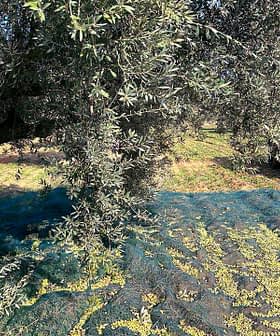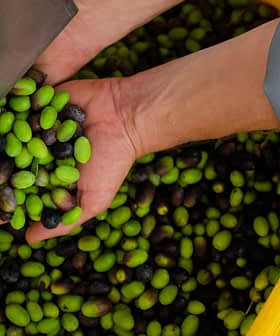A slight reduction in world olive oil consumption and a 20 percent fall in production are the current forecasts from the International Olive Council (IOC) for the 2012/13 season.
According to updated but provisional figures presented at the 40th meeting of the IOC Advisory Committee on Olive Oil and Table Olives, held on November 14 and 15, global consumption is expected to slip from about 3.2 million tons in 2010/11 to 3.1 million this season.
Major producers Spain, Italy and Greece — each hard-hit by financial crisis — are all forecast to see decline in domestic consumption. Of the world’s main olive oil consumers, Italy is expected to go from 724,500 tons to 695,000, Spain from 582,100 to 550,000, and Greece from 212,500 to 208,000. The United States, meanwhile, is forecast to stay at 294,000 tons.
Consumption to outstrip demand, stocks to dwindle
Consumption is nevertheless predicted to exceed the expected 2.71 million tons in world production this season (October to September), down from 3.40 million in 2011/12.
While higher estimates of even up to 70 percent have been made lately by Spanish agricultural groups, the IOC estimates Spain’s harvest this year — humbled by harsh weather after 3 bumper crops — will be down 49 percent on the previous crop year, to just 820,000 tons.
Declines are also expected in Morocco, from 120,000 to 110,000, Portugal from 76,200 to 68,600, and Argentina from 32,000 to 17,000 tons.
The world started the 2012/13 season with 916,500 tons in carryover stocks but will end it with only about 387,000 tons, the IOC believes.
Import growth in 2011/12
According to the IOC’s November market newsletter, published on December 5, olive oil and olive pomace oil imports in 2011/12 grew 38 percent in China, 21 percent in Japan, 15 percent in Russia, and 9 percent in Brazil and the US. There was a 1 percent decline in Canada.
Ex-mill prices
Compared with the same period a season earlier, producer prices for extra virgin olive oil started to rise sharply in Spain in late June, reaching €2.64/kg by the second last week of September, the IOC newsletter says.
“They then switched course in the last week of October, reaching €2.40/kg by the second last week of November. Although this represents a 9 percent drop from the September peak, it is still 27 percent higher than a season earlier.”
“These price movements have to be viewed in a context where the estimates for 2012/13 are becoming more accurate as the harvest moves forward. It must also be remembered that prices have been very low in Spain through the last two crop years and this increase brings them up to the level of March 2008.”
After rising within the space of two months from €2.38/kg, in the first week of August, to €2.90/kg, in the first week of October, producer prices in Italy dropped suddenly to an intermediate level of €2.62/kg, but still up 3 percent on the previous season.
In Greece, where prices have risen 15 percent over the last three months, the increase has been more even and slower, from €1.82/kg (late July) to €2.24/kg (second last week of November).
The gap between the price of refined olive oil and extra virgin olive oil is currently around €0.06/kg in Spain and €0.18/kg in Italy.








